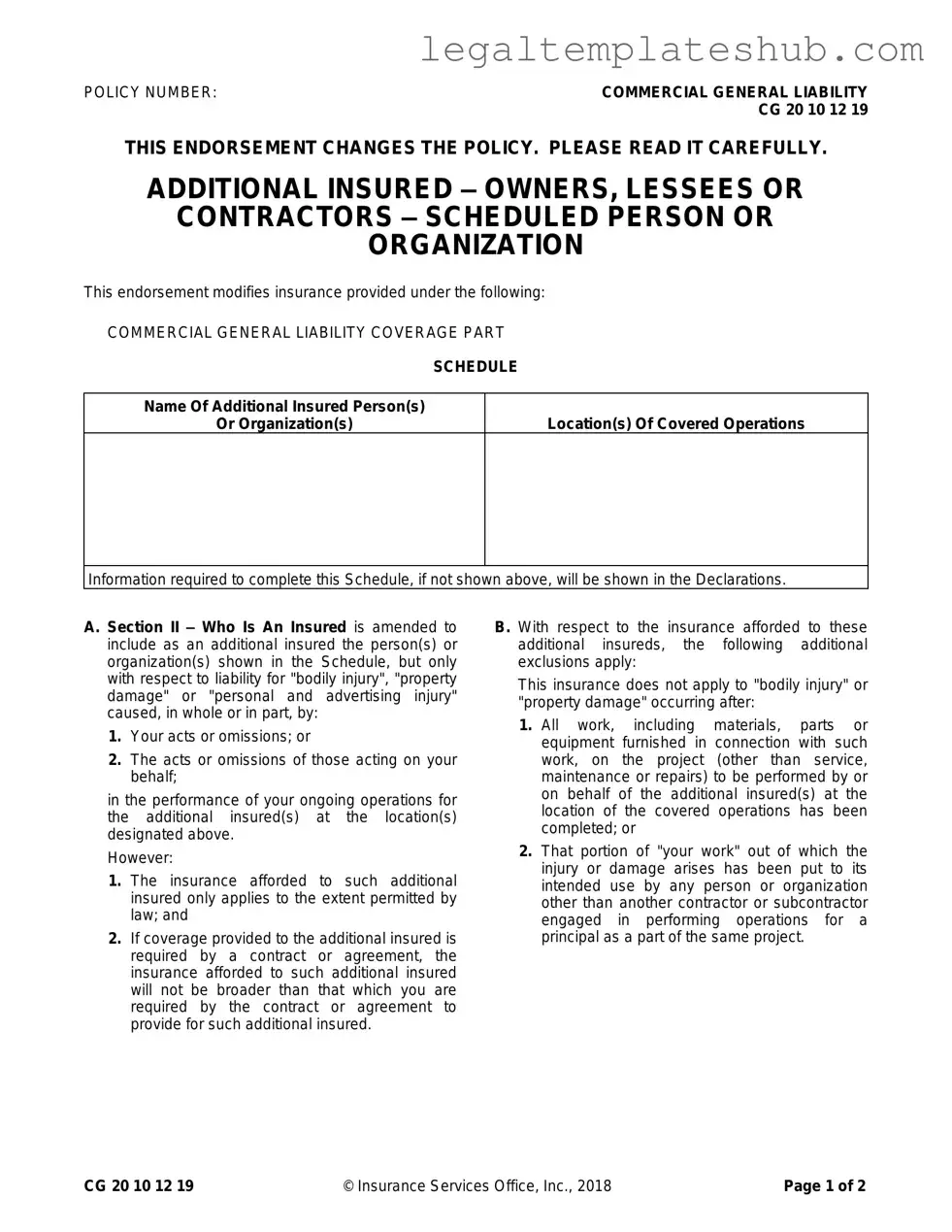Blank Cg 20 10 07 04 Liability Endorsement PDF Form
The Cg 20 10 07 04 Liability Endorsement form is a crucial document that modifies a Commercial General Liability policy by adding specific individuals or organizations as additional insureds. This endorsement ensures that these additional insureds are covered for certain liabilities arising from the actions of the policyholder or their representatives during ongoing operations. Understanding its implications can help protect all parties involved, so be sure to fill out the form by clicking the button below.
Access Editor
